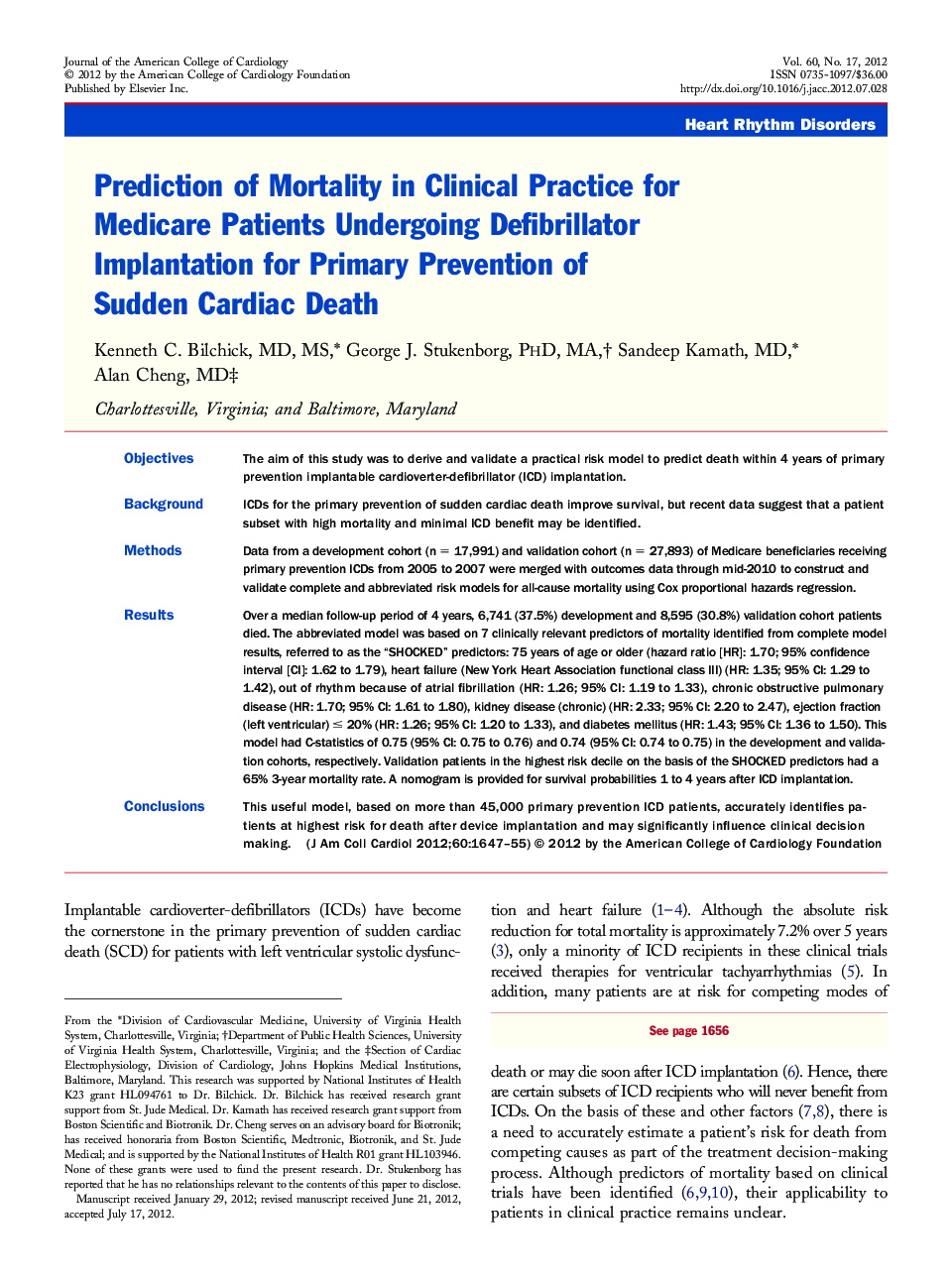| Article ID | Journal | Published Year | Pages | File Type |
|---|---|---|---|---|
| 2947057 | Journal of the American College of Cardiology | 2012 | 9 Pages |
ObjectivesThe aim of this study was to derive and validate a practical risk model to predict death within 4 years of primary prevention implantable cardioverter-defibrillator (ICD) implantation.BackgroundICDs for the primary prevention of sudden cardiac death improve survival, but recent data suggest that a patient subset with high mortality and minimal ICD benefit may be identified.MethodsData from a development cohort (n = 17,991) and validation cohort (n = 27,893) of Medicare beneficiaries receiving primary prevention ICDs from 2005 to 2007 were merged with outcomes data through mid-2010 to construct and validate complete and abbreviated risk models for all-cause mortality using Cox proportional hazards regression.ResultsOver a median follow-up period of 4 years, 6,741 (37.5%) development and 8,595 (30.8%) validation cohort patients died. The abbreviated model was based on 7 clinically relevant predictors of mortality identified from complete model results, referred to as the “SHOCKED” predictors: 75 years of age or older (hazard ratio [HR]: 1.70; 95% confidence interval [CI]: 1.62 to 1.79), heart failure (New York Heart Association functional class III) (HR: 1.35; 95% CI: 1.29 to 1.42), out of rhythm because of atrial fibrillation (HR: 1.26; 95% CI: 1.19 to 1.33), chronic obstructive pulmonary disease (HR: 1.70; 95% CI: 1.61 to 1.80), kidney disease (chronic) (HR: 2.33; 95% CI: 2.20 to 2.47), ejection fraction (left ventricular) ≤ 20% (HR: 1.26; 95% CI: 1.20 to 1.33), and diabetes mellitus (HR: 1.43; 95% CI: 1.36 to 1.50). This model had C-statistics of 0.75 (95% CI: 0.75 to 0.76) and 0.74 (95% CI: 0.74 to 0.75) in the development and validation cohorts, respectively. Validation patients in the highest risk decile on the basis of the SHOCKED predictors had a 65% 3-year mortality rate. A nomogram is provided for survival probabilities 1 to 4 years after ICD implantation.ConclusionsThis useful model, based on more than 45,000 primary prevention ICD patients, accurately identifies patients at highest risk for death after device implantation and may significantly influence clinical decision making.
